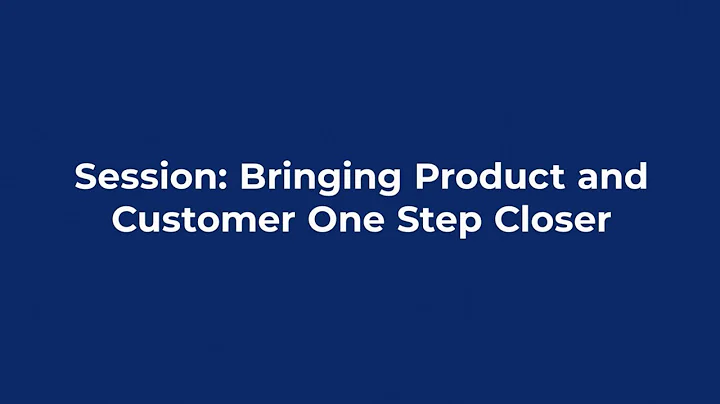Step-by-Step Guide to Launching a High-Converting Shopify Store
Table of Contents:
- Introduction
- Setting Up Your Shopify Store
2.1 Creating a Separate Gmail Account
2.2 Signing Up for Shopify
2.3 Choosing a Theme and Customizing Your Store
- Key Apps for Your Shopify Store
3.1 Zipify One Click Upsell
3.2 Review Apps for Importing Reviews
- Setting Up Shipping Policies and Payment Gateways
4.1 Creating Shipping Policies
4.2 Integrating Payment Gateways
- Fine-tuning Your Store
5.1 Editing the Product Page
5.2 Adding Trust Badges and Policies
5.3 Optimizing the Menu and Navigation
- Final Touches and Launching Your Store
6.1 Creating a Logo and Branding
6.2 Configuring Analytics and Pixel Integration
- Next Steps: Driving Traffic to Your Store
7.1 Organic Traffic Strategies
7.2 Paid Traffic Strategies
- Conclusion
Setting Up Your Shopify Store
Are you interested in dropshipping or creating a Shopify store but unsure where to start? In this guide, we will walk you through the step-by-step process of building a high-converting online store using Shopify's theme Builder. We will also cover essential apps and settings necessary to manage and generate sales. Whether you're a beginner or have an existing store, we'll share the strategies used by successful store owners to help you launch your own profitable e-commerce venture.
To get started, you'll need to create a separate Gmail account that will serve as your business email. This will help separate your business assets and information from your personal accounts. Once you have your Gmail account set up, you can then proceed to sign up for Shopify, either through their website or using a special offer link provided. Shopify offers a 3-day free trial, giving you access to their platform and tools. During the sign-up process, you'll be asked to provide your email address and choose a store name. You can change the store name later or connect your own domain if you prefer.
Once you've set up your Shopify account, it's time to select a theme for your store. Shopify offers a variety of free and paid themes, but for those starting with a limited budget, the "Dawn" theme is a great option. It is clean, responsive, and highly customizable. To customize your chosen theme, go to the Themes section in your Shopify dashboard and import the theme you selected. From there, you can start editing and customizing different sections of your store, such as the homepage, product pages, menus, and footer.
Key Apps for Your Shopify Store
To enhance the functionality and performance of your Shopify store, it is important to integrate useful apps. Two key apps that we recommend are "Zipify One Click Upsell" and a review app for importing customer reviews.
Zipify One Click Upsell allows you to set up pre-purchase and post-purchase upsells to increase your average order value. With pre-purchase upsells, you can offer additional products or discounts to customers before they complete their purchase. Post-purchase upsells allow you to make similar offers immediately after a customer has made a purchase. By enticing customers with relevant upsells, you can maximize revenue and increase customer satisfaction.
Importing customer reviews from AliExpress is another essential step to build trust and social proof for your products. Using a review app, you can easily import reviews from AliExpress listings and display them on your product pages. This helps build credibility and encourages potential customers to make a purchase based on positive feedback from previous buyers.
Setting Up Shipping Policies and Payment Gateways
To ensure a smooth customer experience, it's important to set up clear shipping policies and integrate secure payment gateways. In the Settings section of your Shopify dashboard, you can create shipping policies that align with your supplier's shipping times and options. Consider the average shipping times provided by your supplier and set realistic expectations for your customers. Additionally, integrate shipping rates based on order price and location to provide accurate shipping costs at checkout.
Next, you'll need to integrate payment gateways such as Shopify Payments or PayPal to securely process customer transactions. By linking your chosen payment gateway to your Shopify store, you'll be able to offer various payment options and streamline the checkout process for your customers.
Fine-tuning Your Store
To create a visually appealing and user-friendly store, you'll want to make some additional adjustments. This involves editing the product pages, adding trust badges and refund policies to build customer trust, and optimizing the menu and navigation for easy browsing. Customize your product pages to showcase the features, benefits, and specifications of your products in a compelling and informative manner. Highlight customer reviews, product images, and key selling points to engage potential buyers.
Adding trust badges, such as secure payment icons and satisfaction guarantees, can help alleviate customer concerns about the legitimacy and safety of their online transactions. It's also important to clearly communicate your refund and return policies to build trust and set proper expectations.
Optimizing your store's menu and navigation ensures that visitors can easily find what they're looking for. Keep your menu simple and organized, and consider adding drop-down submenus for better categorization and navigation. Utilize clear and descriptive labels for menu categories, making it easy for customers to navigate through your store.
Final Touches and Launching Your Store
Before launching your store, finalize key elements such as your logo and branding. You can use graphic design tools like Canva to create a professional-looking logo that represents your brand identity. Consider the color scheme, typography, and overall aesthetics that align with your store's niche.
Don't forget to configure essential analytics and tracking tools. Integrate tools like Google Analytics and Facebook Pixel to gather valuable data about your store's performance, visitor behavior, and marketing campaigns. This data will help you make informed decisions and optimize your marketing strategies.
Once you've completed all these steps, you're ready to launch your store. Make sure you have your own domain connected or use the default domain provided by Shopify. Test your website in different browsers and devices to ensure it is fully functional and visually appealing. Conduct a thorough review of your store's content, navigation, and customer journey to ensure a seamless user experience.
Next Steps: Driving Traffic to Your Store
Now that your store is up and running, the next step is to drive traffic and generate sales. There are two primary strategies you can employ—organic traffic and paid traffic. Organic traffic strategies include search engine optimization (SEO) techniques, content marketing, and social media engagement. Paid traffic strategies involve running targeted advertising campaigns on platforms like Facebook Ads, Google Ads, and Instagram Ads. Experiment with different strategies to find what works best for your store and your target audience.
Conclusion
Creating a successful Shopify store requires careful planning, optimization, and ongoing marketing efforts. By following the steps outlined in this guide, you'll be well-equipped to set up and launch your own high-converting online store. Remember to continuously monitor and refine your store based on customer feedback and data analytics. With dedication, persistence, and a customer-centric approach, your Shopify store has the potential to become a thriving e-commerce business. Good luck on your entrepreneurial journey!
Highlights:
- This guide provides step-by-step instructions for setting up and launching a high-converting Shopify store.
- Key steps include creating a separate Gmail account, signing up for Shopify, customizing your store's theme, and integrating essential apps.
- Setting up clear shipping policies, integrating secure payment gateways, and fine-tuning your store's design and navigation are crucial for a seamless customer experience.
- Launching your store entails finalizing branding elements, configuring analytics and tracking tools, and thoroughly testing your website's functionality.
- The next step is to drive traffic to your store through organic and paid traffic strategies.
- Continuous monitoring, refinement, and customer-centricity are essential for the long-term success of your Shopify store.






















